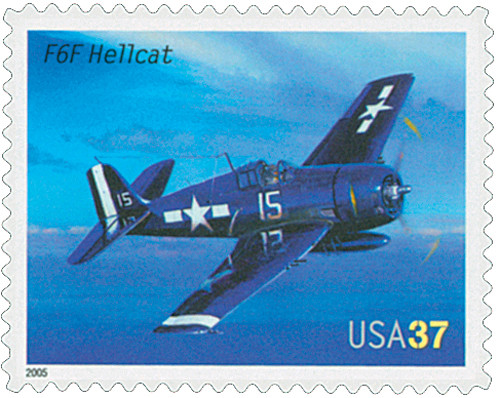
2005 37c Advances in Aviation: Engin/Research Ercoupe 415
# 3920 - 2005 37c Advances in Aviation: Engin/Research Ercoupe 415
$0.80 - $3.20
U.S. #3920
37¢ Erocoupe 415
American Advances in Aviation
37¢ Erocoupe 415
American Advances in Aviation
Issue Date: July 29, 2005
City: Oshkosh, WI
Printing Method: Lithographed
Color: Multicolored
City: Oshkosh, WI
Printing Method: Lithographed
Color: Multicolored
In the mid-1930s, the Bureau of Air Commerce held a contest for the design of an easy-to-fly, safe airplane. Fred Weick and colleagues at the National Advisory Committee for Aeronautics designed a prototype of the Ercoupe 415 in response to that competition.
In 1936, Weick joined the Engineering and Research Corporation (ERCO) as chief engineer. His main job at ERCO was to develop his prototype into a commercial airplane for private use.
Weick designed a two-seat, low-wing, all-aluminum, light monoplane that used a control system linked to the wheel to eliminate stick and rudder pedals. (Later models offered conventional rudder bars, since experienced pilots were often confused by the wheel-control system.)
The Ercoupe was easy to fly and safe; it was almost impossible to spin or stall. A fixed-tricycle landing gear provided great ground handling, and the cockpit provided all-around visibility. The Ercoupe 415 was affordable, inexpensive to operate and maintain, and able to take off and land in small airfields.
Ercoupe 415 production began in 1939, but stopped in 1941 after 112 aircraft had been built; all aluminum was needed then for the war effort. After the war, production resumed and continued for nearly 30 years.
U.S. #3920
37¢ Erocoupe 415
American Advances in Aviation
37¢ Erocoupe 415
American Advances in Aviation
Issue Date: July 29, 2005
City: Oshkosh, WI
Printing Method: Lithographed
Color: Multicolored
City: Oshkosh, WI
Printing Method: Lithographed
Color: Multicolored
In the mid-1930s, the Bureau of Air Commerce held a contest for the design of an easy-to-fly, safe airplane. Fred Weick and colleagues at the National Advisory Committee for Aeronautics designed a prototype of the Ercoupe 415 in response to that competition.
In 1936, Weick joined the Engineering and Research Corporation (ERCO) as chief engineer. His main job at ERCO was to develop his prototype into a commercial airplane for private use.
Weick designed a two-seat, low-wing, all-aluminum, light monoplane that used a control system linked to the wheel to eliminate stick and rudder pedals. (Later models offered conventional rudder bars, since experienced pilots were often confused by the wheel-control system.)
The Ercoupe was easy to fly and safe; it was almost impossible to spin or stall. A fixed-tricycle landing gear provided great ground handling, and the cockpit provided all-around visibility. The Ercoupe 415 was affordable, inexpensive to operate and maintain, and able to take off and land in small airfields.
Ercoupe 415 production began in 1939, but stopped in 1941 after 112 aircraft had been built; all aluminum was needed then for the war effort. After the war, production resumed and continued for nearly 30 years.


















